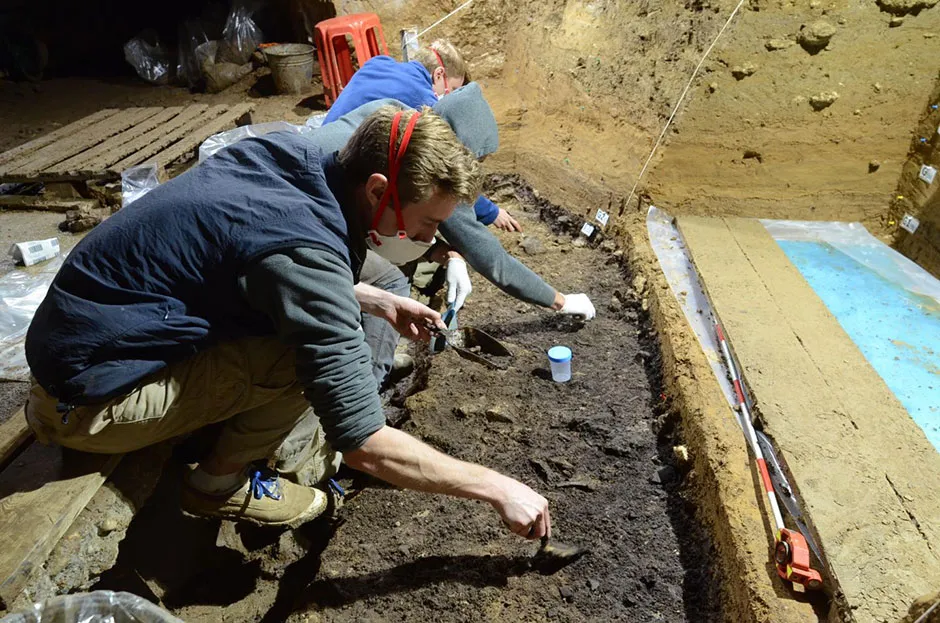Early humans were present in Europe around 46,000 years ago – suggesting the species shared the continent with Neanderthals for longer than previously thought, researchers say.
According to analysis of remains and tools found in a Bulgarian cave, there was an overlap which allowed for interaction between Homo sapiens and Neanderthals.
Modern humans entered Europe around 45,000 years ago, and soon after replaced Neanderthals. This period of population replacement is known as the Middle to Upper Palaeolithic transition.However, the precise timing of events during this time has been the cause of much debate.

In two studies published in Nature, and Nature Ecology and Evolution, scientists describe hominin remains and artefacts excavated from the cave.
In one study, they found a tooth that they assign to Homo sapiens along with four other bone remains that are identified as human on the basis of their ancient protein and DNA content.
The Nature Ecology and Evolution paper suggests an age range between 46,940 and 43,650 years old.Analysis of DNA extracted from these bones provides estimated dates of 44,830 to 42,616 years old, supporting the radiocarbon dating.
An international research team renewed excavations at Bacho Kiro Cave in 2015.
Read more about Neanderthals:
- 40,000-year-old yarn suggests Neanderthals had basic maths skills
- Shanidar skeleton discovery sheds light on Neanderthal 'flower burial'
Jean-Jacques Hublin, director at the Max Planck Institute for Evolutionary Anthropology in Leipzig, Germany, said: “The Bacho Kiro Cave site provides evidence for the first dispersal of H. sapiens across the mid-latitudes of Eurasia.
“Pioneer groups brought new behaviours into Europe and interacted with local Neanderthals. This early wave largely predates that which led to their final extinction in western Europe 8,000 years later.”
The excavations also uncovered a number of ornaments, including pendants made from bear teeth that resemble those found in later sites associated with Neanderthal activity.

According to the researchers, these findings demonstrate that modern humans expanded into the mid-latitudes of Eurasia before 45,000 years ago, overlapped with Neanderthals and thereby influenced their behaviour before replacing them.
“The majority of animal bones we dated from this distinctive, dark layer have signs of human impacts on the bone surfaces, such as butchery marks," adds Helen Fewlass, of the Max Planck Institute for Evolutionary Anthropology.
"Along with the direct dates of human bones, provides us with a really clear chronological picture of when Homo sapiens first occupied this cave, in the interval from 45,820 to 43,650 years ago, and potentially as early as 46,940 years ago.”
Reader Q&A: Did humans and Neanderthals interbreed?
Asked by: Benjamin Hatch, Leeds
Yes, and more than once!
DNA analysis suggests that the earliest encounter between the two species was 100,000 years ago, just as the earliest wave of Homo sapiens was migrating out of Africa. They met Neanderthals moving eastwards from Europe to Asia and swapped genes.
Later interbreeding periods happened 55,000 and 40,000 years ago, and each time we acquired some Neanderthal genes. Unless you are of sub-Saharan descent, your genome contains 1-4 per cent Neanderthal DNA.
Read more: